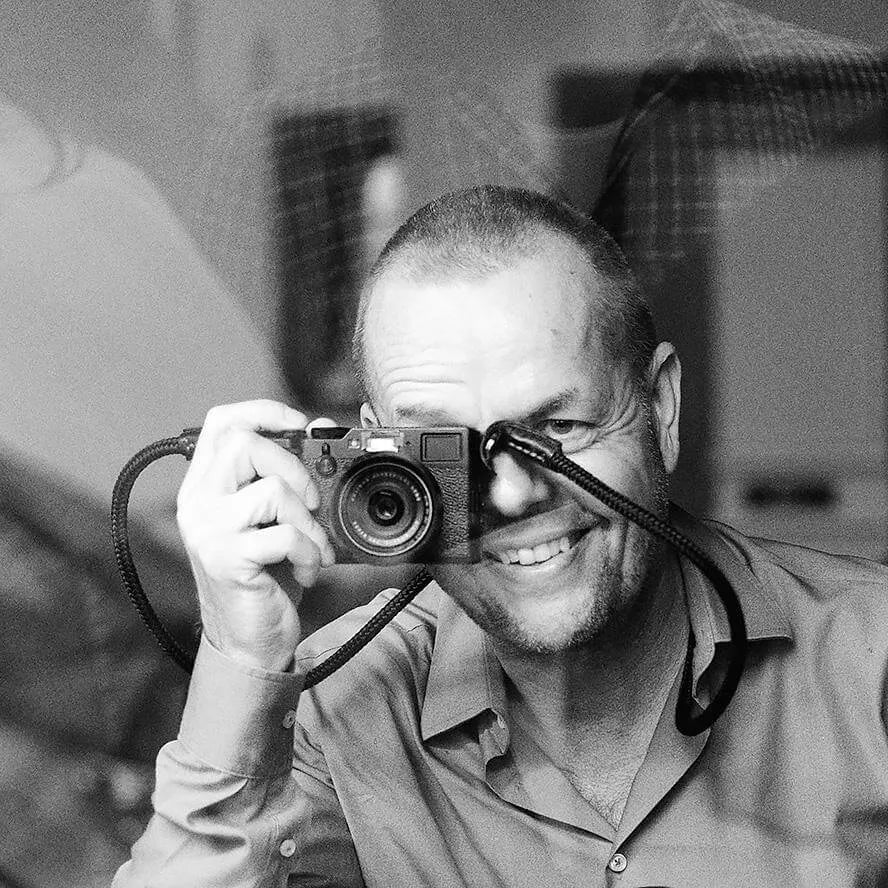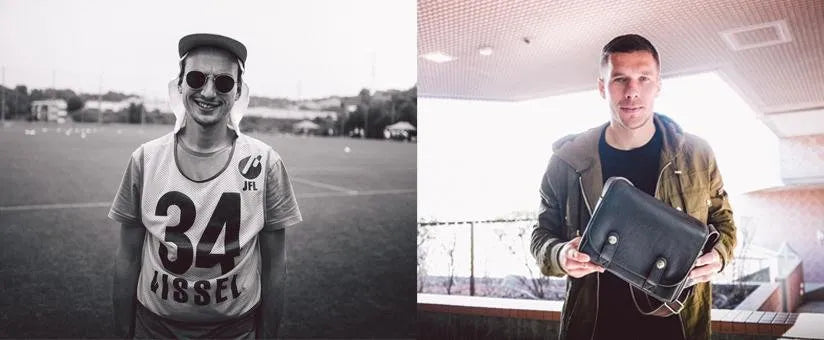
OBERWERTH ASKS: CARSTEN BOCKERMANN
Pictures: ©Carsten Bockermann
You can find more pictures of Carsten on
Carsten's homepage | Facebook | Instagram
INTERVIEW WITH CARSTEN BOCKERMANN
Our Brand Ambassador and Oberwerth friend Carsten Bockermann can look back on over four decades of experience behind the camera. He discovered his interest in photography back in 1976. Since the early 1990s, he has pursued it with great passion and has witnessed its transformation at first hand over the years. We met up with Carsten and chatted a little.
 |
 |
Oberwerth: Hello Carsten, thank you for taking the time to tell us a little about your 40 years of photography. You don't photograph full-time, but photography is much more than just a hobby for you. Back to the beginnings: How did you find your way into photography and where does your enthusiasm for the image come from?
Carsten Bockermann: I think my fascination with photography began when I was a little boy. My parents and I weren't able to travel very much back then. We saw the world through the eyes of Robert Lebeck, Thomas Höpker and others, who published their reports in STERN, for example. Incidentally, I met Thomas Höpker later on and told him that he was partly to blame for my passion for photography.
Things got more serious at the beginning of the 1990s. A friend, who had lived in the USA for a few years due to his job, drew my attention to the group of photographers around National Geographic Magazine. The offer of photo workshops with well-known photographers was also new to me at the time. I later attended workshops myself, for example with David Alan Harvey, Alex Webb and William Albert Allard.
You can also find the right camera bag for your equipment and everything you need to protect your camera in our Oberwerth Shop. From classic camera bags modern sling bags to elegant photo weekenders and backpacks. Of course you will also find hand straps and shoulder straps here. Finest craftsmanship made from the best materials. Take a look around and find the bags & accessories that best suit you and your equipment!
Photography is not an end in itself, but a medium for telling stories, and so during this time it became increasingly clear to me what I actually wanted to photograph and communicate.
 |
 |
 |
Oberwerth: Storytelling is also a central element of your pictures. How would you describe your photography?
Carsten Bockermann: My pictures almost always focus on people in their surroundings. In the beginning, I found the apparent differences between the cultures of the countries I traveled to extremely interesting. Over time, I found the similarities more exciting than the differences. What I enjoy most is when I manage to capture a universal moment, a situation that is understood all over the world.
 |
 |
 |
Oberwerth: Over the years, photography has taken you to many different places around the world, so much so that you describe your pictures as "travel documentary". Looking back, which story was the most exciting for you? And which country would you describe as an absolute highlight?
Carsten Bockermann: I can't really rank them. I haven't been bored in any country because I meet interesting people everywhere, especially through photography. It even works at home in Germany, even if taking photos in familiar surroundings is a challenge in its own right.
But exotic countries can also be difficult. In India, for example, I found it very difficult to avoid the clichéd views. The visual impressions there are overwhelming at first. You have to concentrate very hard to show what is important to you.
The US state of Montana has had a very special significance for me for a few years now. I attended a workshop there in 2011 with Willam Albert Allard, who is known for his pictures of the American West. Afterwards, I drove around there for a few days and immediately felt at home. Since then, I've spent at least four weeks there every year. Next year there will also be an exhibition of my pictures from Montana.
 |
 |
 |
Oberwerth: You are not afraid to leave your comfort zone and travel to countries such as India. Besides your annual trip across the pond, what is your next project?
Carsten Bockermann: One issue that is currently affecting many people, and rightly so, is the disappearance of many animal species, primarily due to poaching and habitat destruction. But it's not all bad news here. In some regions of Africa, for example, people are discovering that animals are worth protecting and can even bring economic benefits, for example through tourism. I have a project in mind, but I can't give any more details at the moment.

Oberwerth: Africa sounds very exciting and is definitely a very exciting continent. We are curious to see what your project will look like in concrete terms. Let's leave the here and now for a while and think about photography in general. As already mentioned, you have been taking photographs for over 40 years. How has photography changed over time? And what are your conclusions - positive or negative?
Carsten Bockermann: In my opinion, photography has changed significantly in two aspects.
One concerns the technique of taking pictures. Although I learned to take photos with film, I certainly don't regret it. Digital technology has opened up possibilities that never existed with film, and the image quality is unquestionably superior. On the other hand, the chemical process, especially when using slide film, required a completely different discipline. You had to get everything "right" when you took the picture, because there was practically no possibility of correcting it afterwards.
The other aspect is the publication of images. Today, anyone can make their pictures accessible to a wide audience. The resulting flood of images doesn't make it easy for viewers to find the really interesting photos.
Oberwerth: In addition to photography itself, equipment also changes over the years, of course. What was your first camera and which system do you trust today?
Carsten Bockermann: I can claim to have switched to mirrorless cameras for the second time... (laughs)
My first "real" camera was a Nikkormat FT2, a Nikon SLR. Other models from this manufacturer followed. At the beginning of the 1990s, I bought a Leica M6, initially just to have a more discreet camera alongside the SLRs. But I found working with a rangefinder camera so good that I switched to it completely.
Then in 2004, more out of curiosity about digital photography, I bought a Nikon D70. As Leica had nothing to offer in this area at the time and I was fascinated by the possibilities of digital technology, I started working with SLR cameras again, this time digital.
At Photokina 2010, I saw a prototype of the Fuji X100 and became one of the first customers in Germany at the beginning of the following year. Since then I have remained loyal to Fuji and today I mostly use the X-Pro2 and the X100F. I simply like working with an optical viewfinder. What's more, these cameras don't obscure the photographer's face like a large DSLR, which is a great advantage, especially when photographing people.
 |
 |
Oberwerth: Carsten, thank you very much for the interesting and informative interview. Finally, we can only wish you lots of fun and interesting impressions on your upcoming travels. And of course we would be delighted if you could find the time to share some of your experiences with us afterwards.
Carsten Bockermann: Thank you very much and you're welcome. See you soon!
 |
 |
 |
Pictures: ©Carsten Bockermann
You can find more pictures of Carsten on
Subscribe to our newsletter now and receive regular updates on our blogs, products and offers! After successful registration you will also receive a 10% voucher for the Oberwerth Online Shop!

